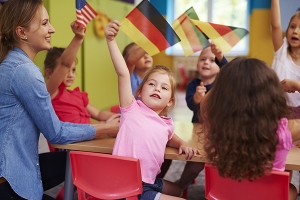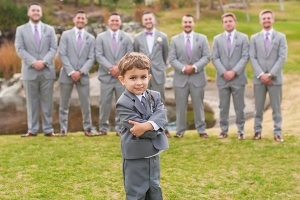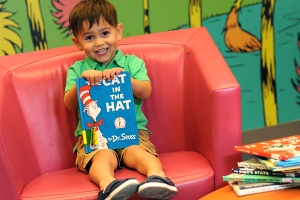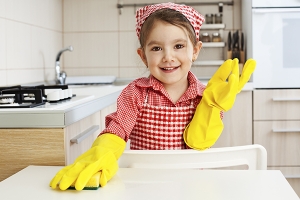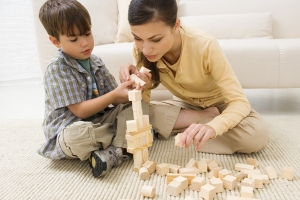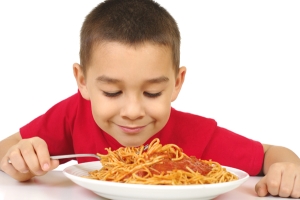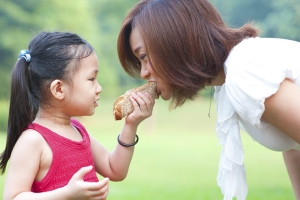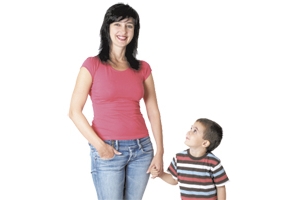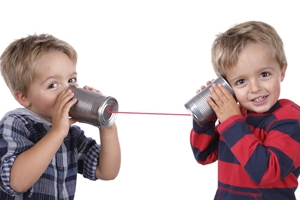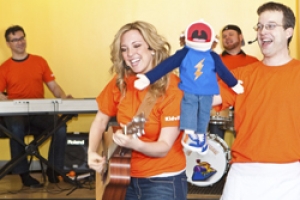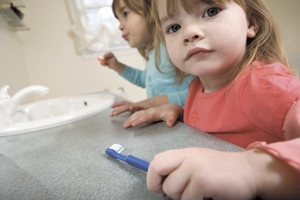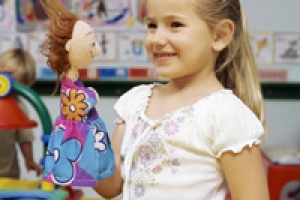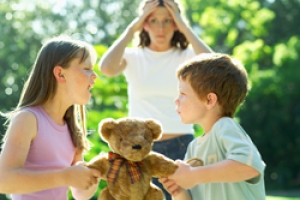
Five Ways to Help You and Your Child Survive Separation Anxiety
Saying good-bye is hard to do, especially if you’re the parent of a toddler who suffers from separation anxiety. Here are some helpful solutions for making your “so-longs” a little less stressful.
It’s the moment every parent of a small child dreads: the good-bye. For parents of young children, it can be a gut-wrenching, heart-aching, guilt-ridden moment full of tears, protests, and quick getaways. Separation anxiety can ruin your workday, put a damper on your (rare!) dinner out, and keep you trapped in your house (and chained to your toddler). But that doesn’t have to be the case.
Babies can show signs of separation anxiety as early as six months, and young children can experience it at almost any age. One of the hardest scenarios for parents to deal with is dropping their clingy and crying toddler off at daycare. It can tug at your heartstrings and make you doubt yourself and your decisions. But the good news is that separation anxiety will pass—and there are some simple solutions to help you get to that point.
Toddlers, she says, understand about people leaving before they learn about people returning, and they can tell from your actions that you’re about to leave. So for most children (and their parents), anxiety begins to build even before you’ve stepped one foot out the door.
Separation anxiety can show up in many forms. Your child may cry when you leave the room or refuse to be put down if she knows you’ll be leaving. Some children will even go so far as to follow their parents into every room all day long. It can be both frustrating and sad for parents when they feel as though they are causing their children sadness. Read on for five tips that will help saying bye-bye be a little bit easier for you and your child:
1. Bring out the “blankie.”
Transitional objects, such as a favorite blanket or stuffed toy, can be reassuring to small children. In fact, to your child, these items are a symbol of you. They represent comfort, safety, and joy. Encouraging your child to attach to a transitional object early in infancy will allow him to be better at self-soothing later on. When you have to separate from your child, be sure that those special objects are close at hand to provide comfort while you are away.
Babies love satin. Rubbing the satin takes them back to the safety and security of the womb. Offering a blanket, stuffed toy, or other soft object to your little one during your absence will give him something familiar that will help to comfort him. It will make the transition easier for the both of you.
2. Practice makes perfect.
It may seem silly for you to practice being apart from your child, but it can really make a big difference in the long run. If you know you’re going to be away for a longer than normal period, help your child work up to that separation by taking a series of short breaks, such as running next door for a minute or going out on a brief errand.
3. Ease your child into separation.
This a great way to prepare her for being away from you. And you don’t even have to leave the house to get started. Tell your baby or toddler that you’ll be going to another room and you’ll be back soon. This will help her to begin to make the connection that although you are gone now, you will come back.
Ask your sitter to come early. Whether you’re leaving your baby for a dinner date with your spouse, or you have hired an in-home sitter to watch your little one while you are at work, leaving him in the hands of someone else can be stressful for both you and your baby. And even though you may not realize it, your child picks up on the anxiety you are feeling, and it will affect his reaction as well. To give you both peace of mind, be sure to spend some time with the sitter and your child together. If you are relaxed and happy about the situation, your child is much more likely to be as well.
4. Leave on a happy note.
Every parent has done the sneaky slip out the door in hopes of making a tearless getaway. But this is actually doing more harm to your baby than good. Just because she doesn’t see you leave doesn’t mean she won’t eventually notice your absence. And in order to alleviate separation anxiety, you want to make sure your child is associating happy thoughts with your coming and going. Let her see you leave, even if it triggers the waterworks—and make sure there is a fun activity in place for her to take part in immediately following your departure.
It’s hard to see your child cry when you leave. But if you continue to sneak off, she’ll become even more worried that you might disappear at any random time. Say your bye-byes and then help her become involved in a fun activity that will occupy her as you leave. It may take a few tries, but eventually she’ll begin to associate your leaving with emotions other than anxiety and sadness.
5. Ditch the guilt.
There aren’t many things that pull at your heartstrings more than having to leave a crying child who is reaching out for you. Situations of separation anxiety can create a sense of overwhelming guilt for parents. You want to be there for your child but there are times when you just can’t. And it’s not healthy for either of you if you constantly feel trapped to the situation. Remind yourself that this is a stage and you both will get through it. You aren’t a bad parent for leaving your child in tears. In fact, your efforts are working to raise a healthy, independent adult!
Don’t minimize your child’s experience by getting resentful or angry if he goes into a tirade when you leave. It’s quite normal to feel at peace with your child’s neediness at one moment and then to feel agitated and overwhelmed the next. Try to find ways to balance your need for his independence with his needs to expand his world and feel safe. You’ll both be the better for it.
Your anxiety can be contagious. The more anxious you are about leaving or about others caring for your little one, the more anxious she will be. Be calm, confident, and reassuring. And when you do return, take time to enjoy the warm welcome and extra hugs. Being apart makes reuniting that much sweeter.
--------------------------
Kimberley Clayton Blaine, MA, MFT, is the executive producer of the online parenting show www.TheGoToMom.TV and author of “The Go-To Mom’s Parents’ Guide to Emotion Coaching Young Children.” Kimberley is a national child development expert and a licensed family and child therapist specializing in working with children newborn to six years old. She lives in Los Angeles, California, with her husband and two young boys.

